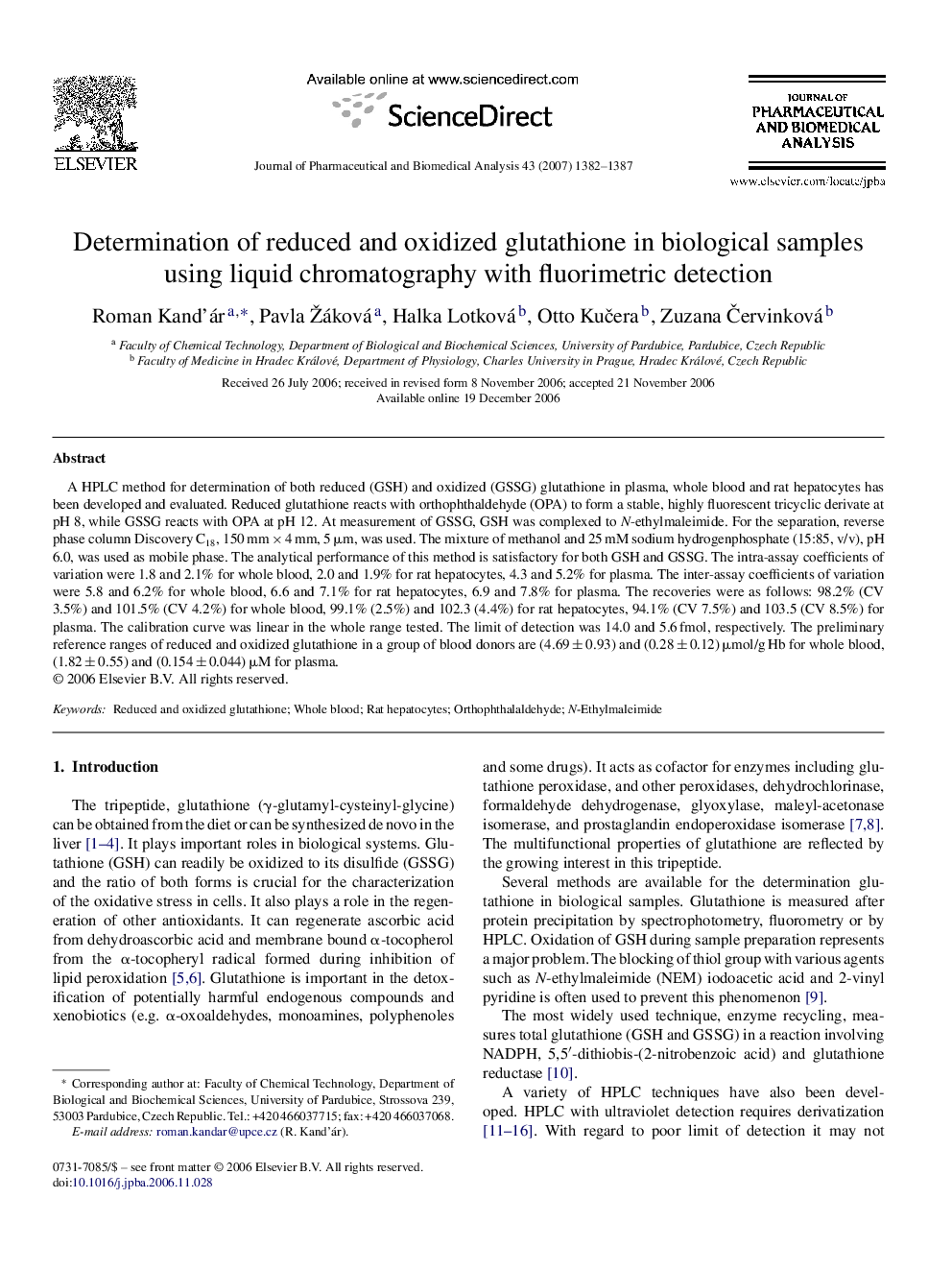| Article ID | Journal | Published Year | Pages | File Type |
|---|---|---|---|---|
| 1223916 | Journal of Pharmaceutical and Biomedical Analysis | 2007 | 6 Pages |
A HPLC method for determination of both reduced (GSH) and oxidized (GSSG) glutathione in plasma, whole blood and rat hepatocytes has been developed and evaluated. Reduced glutathione reacts with orthophthaldehyde (OPA) to form a stable, highly fluorescent tricyclic derivate at pH 8, while GSSG reacts with OPA at pH 12. At measurement of GSSG, GSH was complexed to N-ethylmaleimide. For the separation, reverse phase column Discovery C18, 150 mm × 4 mm, 5 μm, was used. The mixture of methanol and 25 mM sodium hydrogenphosphate (15:85, v/v), pH 6.0, was used as mobile phase. The analytical performance of this method is satisfactory for both GSH and GSSG. The intra-assay coefficients of variation were 1.8 and 2.1% for whole blood, 2.0 and 1.9% for rat hepatocytes, 4.3 and 5.2% for plasma. The inter-assay coefficients of variation were 5.8 and 6.2% for whole blood, 6.6 and 7.1% for rat hepatocytes, 6.9 and 7.8% for plasma. The recoveries were as follows: 98.2% (CV 3.5%) and 101.5% (CV 4.2%) for whole blood, 99.1% (2.5%) and 102.3 (4.4%) for rat hepatocytes, 94.1% (CV 7.5%) and 103.5 (CV 8.5%) for plasma. The calibration curve was linear in the whole range tested. The limit of detection was 14.0 and 5.6 fmol, respectively. The preliminary reference ranges of reduced and oxidized glutathione in a group of blood donors are (4.69 ± 0.93) and (0.28 ± 0.12) μmol/g Hb for whole blood, (1.82 ± 0.55) and (0.154 ± 0.044) μM for plasma.
